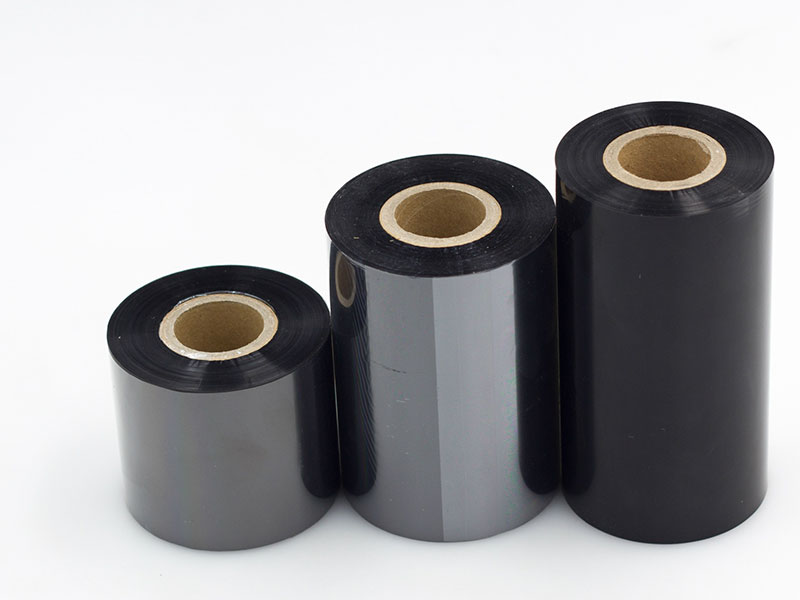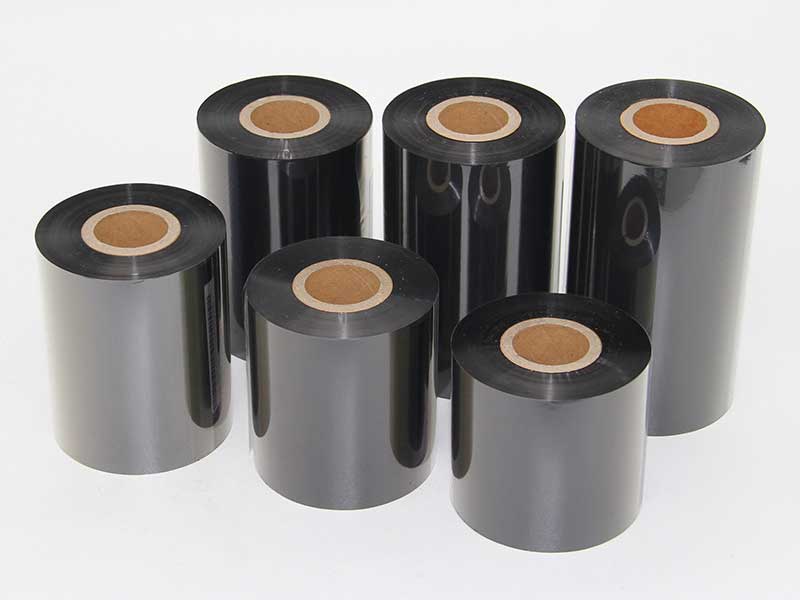As a printing consumable, ribbon (thermal transfer ribbon) is widely used in logistics labels, medical labels, electronic manufacturing, clothing tags and other fields. Different industries have significant differences in the width, accuracy, material, and performance requirements of ribbons, so the slitting machine needs to be customized through modular design, intelligent control, and process optimization. The following is carried out from three aspects: industry needs, technical implementation, and case analysis.

First, the core demand of different industries for ribbons
| industry | Core Requirements | Typical Specifications: | pain point |
| Logistics labels | High abrasion resistance, scratch resistance, suitable for high-speed printing | The width is 50-100mm, and the length is 60-1000m | Ribbon breakage, blurred barcode |
| Medical labels | Biocompatible, anti-static, anti-bacterial | The width is 20-50mm, and the inner diameter of the core is 25mm | Dust pollution and insufficient slitting accuracy |
| Electronics manufacturing | Ultra-narrow width, high flatness, high temperature resistance | The width is 3-12mm, and the thickness is 2.5-5μm | Warping, slitting burrs |
| Clothing tags | Eco-friendly washable label, fade resistant, flexible | The width is 15-40mm, and the coil length is 50-200m | Coil folding, slitting dimensional deviation |
Second, the customized technology of the ribbon slitting machine is realized
1. Modularity of mechanical structure
• Tooling system
◦ Wide ribbon: double blade parallel slitting, blade spacing can be adjusted (such as 50-120mm).
◦ Ultra-narrow ribbon: using laser micro-cutting technology, the width of the knife seam is ≤ 0.05mm to avoid material deformation.
• Roller design
◦ Medical grade: Teflon is plated on the surface of the roller to prevent the adhesion of toner, and the runout of the roller ≤0.005mm.
◦ Electronic grade: air flotation roller is used to reduce friction and avoid static electricity (electrostatic voltage needs to be ≤ 100V).
2. Intelligent control system
• Tension control
◦ Logistics ribbon: When slitting at high speed (300m/min), the tension fluctuation needs to be ≤±1N to prevent the ribbon from stretching.
◦ Medical ribbon: low-speed slitting (50m/min), the tension should be accurate to 0.1N to avoid coil deformation.
• Web guiding system
◦ Edge sensor: real-time monitoring of ribbon edge, automatic adjustment of slitting position, deviation ≤ 0.05mm.
◦ Visual inspection: on-line detection of ribbon surface defects (such as scratches, pinholes), and automatic rejection of defective products.
3. Optimization of process parameters
• Temperature control
◦ Thermal ribbon: The slitting roller is heated to 40-60°C to prevent the material from brittleness.
◦ Resin-based ribbons: No heating required to avoid melting of the coating.
• Slitting speed
◦ Wide ribbon: 100-200m/min, balance efficiency and accuracy.
◦ Ultra-narrow ribbon: 50-100m/min to ensure slitting quality.
4. Environmental protection and compliance
• Dust control: The slitting area is equipped with a negative pressure dust removal system, and the dust concentration ≤ 0.5mg/m³.
• Material compatibility: support a variety of substrates such as washing label, BOPP, PET, etc., with a thickness range of 2.5-12μm.

3. Industry customized case analysis
Case 1: Medical label slitting solution
• Customer demand: A medical enterprise needs to cut anti-static and anti-bacterial ribbons with a width of 25mm, an inner diameter of 25mm and a length of 300m.
•Solution:
◦ Replace the anti-static roller with a surface resistance of ≤10⁸Ω.
◦ Increase the UV sterilization module, and the number of bacteria on the surface of the ribbon after slitting ≤ 10CFU/cm².
◦ Servo motor + grating ruler is adopted, and the slitting accuracy is ±0.02mm.
• Results: Customer scrap rate reduced from 8% to 1%, and production efficiency increased by 40%.
Case 2: Ultra-narrow ribbon slitting in electronics manufacturing
• Customer requirements: An electronics factory needs to cut a 3mm wide ribbon with a thickness of 2.5μm for PCB identification.
•Solution:
◦ Using laser micro-cutting technology, the width of the knife seam is 0.03mm.
◦ Add an ionizing fan to eliminate static electricity generated during the slitting process.
◦ Customized slitting knife holder to avoid ribbon warping.
• Results: Slitting burr rate reduced from 15% to 0.5%, meeting the most stringent standards in the electronics industry.
Fourth, future trends and technological innovation
1. Digital slitting
• Predict tool wear through AI algorithms and warn of replacement in advance.
• Optimize slitting parameters (e.g., tension, speed) based on big data analysis.
2. Green manufacturing
• Water-based coated ribbons are used to reduce VOCs emissions.
• 30% reduction in energy consumption of the slitter (e.g. via motor frequency control).
3. Automate the whole process
• From raw material loading to finished product packaging, unmanned production is realized.
• Integrated MES system to monitor production data in real time.

5. Summary: The customized core of the ribbon slitting machine
• Technical level:
◦ Modular design: tools, rollers, and control systems can be quickly replaced.
◦ Intelligent control: closed-loop control of tension, deviation correction and visual detection.
◦ Process optimization: dynamically adjust parameters according to material, width, and speed.
• Industry Adaptation:
◦ Logistics: high-speed, wear-resistant, break-resistant.
◦ Medical: anti-static, anti-bacterial, high-precision.
◦ Electronics: ultra-narrow, high flatness, high temperature resistance.
◦ Clothing: eco-friendly, flexible, fade-resistant.
Through customized slitting solutions, the ribbon slitting machine can meet the demanding needs of different industries, improve the slitting accuracy to ±0.02mm, increase the production efficiency by more than 50%, and reduce the scrap rate to less than 1%.

Remember, the cost of preventive maintenance is much lower than the losses caused by unplanned downtime.
18. December, 2025
The one-click operation of the ribbon slitting machine represents not only the simplification of the operation method, but also the epitome of the transformation of industrial manufacturing to intelli
18. December, 2025
This is not only an upgrade of technology, but also a paradigm shift in design philosophy from "machine-oriented" to "human-centered care".
18. December, 2025
not just a tool for production, but a gatekeeper of quality, signing an unspoken guarantee of quality with its reliability.
12. December, 2025
Its evolutionary trajectory clearly points to two dimensions: rock-solid reliability and smooth flow of water
12. December, 2025